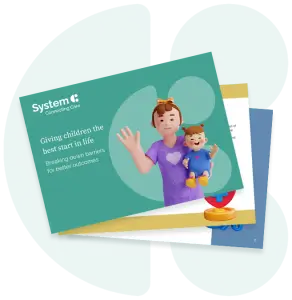The NHS is often described as broken, and social care is becoming forgotten and underfunded. These points overshadow a critical issue: the spike in demand. Demographic changes are a global phenomenon, and as a result, they are beginning to impact our healthcare system. As populations age and grow, the demand for health and social care services increases exponentially.
The Four Determinants of Health
The changing demographics exacerbate demand in the following key determinants.

Housing conditions play a significant role in health outcomes. Poor housing can often lead to a range of health issues, from respiratory problems to mental health challenges. The Office for National Statistics shared that as of early 2025, the average rent in the UK has risen by 8.7% year-on-year, with house prices climbing steadily in many parts of the country. The data also shows that only a small percentage of renters who are aged 20 to 44 can afford to buy a home in the current market.
As a result, we must ensure that safe, affordable housing is available to help maintain good health.
Community factors also influence health. A strong, supportive community can enhance health outcomes, while social isolation can lead to poor mental and physical health. Building strong community networks and fostering social connections can provide individuals with the support they need to maintain their health and well-being.
Easy access to healthcare services is vital. Barriers such as distance, cost, and digital exclusion can prevent people from getting the care they need. Improving service access across the country can really help to remove these barriers. We must ensure that healthcare services are available and accessible to all individuals, regardless of their circumstances.
Even before a child is born, social determinants can create disparities in outcomes. These inequities do not exist in isolation; they form an interconnected web of challenges spanning healthcare access, housing quality, education, and family support services.
The Self-Perpetuating Cycle
The Self-Perpetuating cycle indicates that poverty drives digital exclusion. This lack of access then leads to poor health, which in turn results in poor outcomes. It is a vicious cycle that must be broken.

The latest poverty statistics from 2023/2024 show that there was a record, 4.5 million children in relative poverty (after housing costs). Which is a rise from 4.3 million in 2022/23. This number simplifies to 31% of children within the UK. Analysis from the Child Poverty Action Group indicates that child poverty is set to rise even higher and could potentially reach 4.8 million by the end of this parliament (2029/30), depending on whether any poverty-reducing reforms are absent.
What Does This Mean?
It means tough choices must be made. Our current situation outlines that demand is outstripping supply, and that is not going to change anytime soon. This means that our focus must shift towards preventive measures to help reduce the burden on healthcare services. A possible solution to support our services could be integrating health and social care, which can create a more cohesive and efficient system. Ensuring that we design patient flows and systems around the individual ensures that care is tailored to their needs.
The system is not broken, but it is being used in a way it was never designed for. By understanding and addressing the root causes of the demand spike, we are confident that a more sustainable and effective healthcare system can be created.
The Government recently announced the Giving Every Child the Best Start in Life document, which outlined that the government is actively considering how it can support families with young children. They also shared an update on the upcoming Child Poverty Strategy, which is scheduled for publication later this year. The Government also launched a review of the parental leave and pay system, which will ensure that parents can have access to resources as well as time away from work to support their wellbeing and their children’s early development.
Next Steps
You can explore more insights by reading our ‘Giving Children the Best Start in Life’ Whitepaper.
If you have any questions or need assistance, don’t hesitate to contact us today. We’re here to support you.







